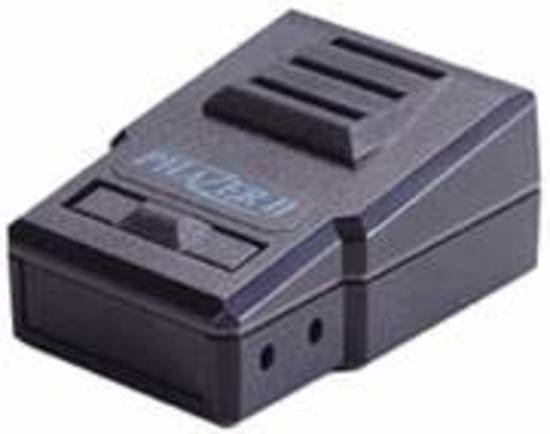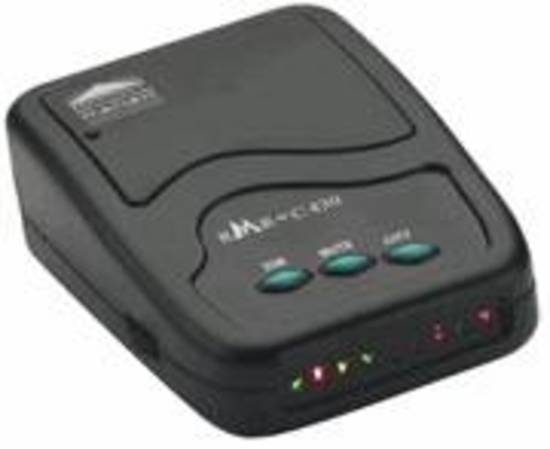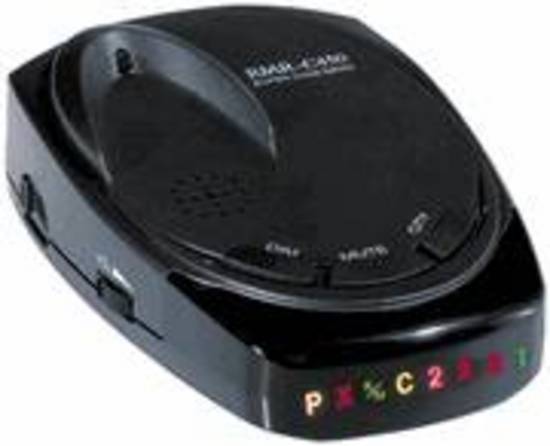[fusion_builder_container hundred_percent=”no” equal_height_columns=”no” menu_anchor=”” hide_on_mobile=”small-visibility,medium-visibility,large-visibility” class=”” id=”” background_color=”” background_image=”” background_position=”center center” background_repeat=”no-repeat” fade=”no” background_parallax=”none” enable_mobile=”no” parallax_speed=”0.3″ video_mp4=”” video_webm=”” video_ogv=”” video_url=”” video_aspect_ratio=”16:9″ video_loop=”yes” video_mute=”yes” video_preview_image=”” border_color=”” border_style=”solid” margin_top=”” margin_bottom=”” padding_top=”” padding_right=”” padding_bottom=”” padding_left=”” type=”flex”][fusion_builder_row][fusion_builder_column type=”1_1″ layout=”1_1″ spacing=”” center_content=”no” hover_type=”none” link=”” min_height=”” hide_on_mobile=”small-visibility,medium-visibility,large-visibility” class=”” id=”” background_color=”” background_image=”” background_position=”left top” background_repeat=”no-repeat” border_color=”” border_style=”solid” border_position=”all” padding_top=”” padding_right=”” padding_bottom=”” padding_left=”” margin_top=”” margin_bottom=”” animation_type=”” animation_direction=”left” animation_speed=”0.3″ animation_offset=”” last=”true” border_sizes_top=”0″ border_sizes_bottom=”0″ border_sizes_left=”0″ border_sizes_right=”0″ first=”true”][fusion_text columns=”” column_min_width=”” column_spacing=”” rule_style=”default” rule_size=”” rule_color=”” hide_on_mobile=”small-visibility,medium-visibility,large-visibility” class=”” id=”” animation_type=”” animation_direction=”left” animation_speed=”0.3″ animation_offset=””]
Rocky Mountain Radar and FCC Hammer
Feb 27, 2007 – NIWOT, CO –
If you want real radar laser protection, consider the PRS1-STi-360 countermeasures system, which provides 360 degree radar laser protection. Read on to see what the FCC asserts about RMR passive scramblers. UNITED STATES COURT OF APPEALS TENTH CIRCUIT No. 97-9579 ROCKY MOUNTAIN RADAR, INC., Petitioner, v. FEDERAL COMMUNICATIONS COMMISSION, Respondent. PETITION FOR REVIEW (FCC No. 97-404) Submitted on the briefs: Kim J. Seter and Tamara K. Gilida of Ankele, Icenogle, Norton & Seter, P.C., Greenwood Village, Colorado, for Petitioner. Joel I. Klein, Assistant Attorney General, Robert B. Nicholson and John P. Fonte, Attorneys, United States Department of Justice, and Christopher J. Wright, General Counsel, Daniel M. Armstrong, Associate General Counsel, and Joel Marcus, Counsel, Federal Communications Commission, Washington, D.C., for Respondent. Before BRORBY, McKAY, and BRISCOE, Circuit Judges. McKAY, Circuit Judge. After examining the briefs and appellate record, this panel has determined unanimously that oral argument would not materially assist the determination of this appeal. See Fed. R. App. P. 34(a); 10th Cir. R. 34.1.9. The case is therefore ordered submitted without oral argument. Petitioner Rocky Mountain Radar, Inc. (RMR) appeals the determination of the Federal Communications Commission (FCC) that the marketing and sale of RMR’s product, a radar jammer, is prohibited by FCC rules interpreting the Communications Act of 1934, as amended. We determine that we have jurisdiction over this appeal, and affirm the FCC order. I. SUMMARY OF THE FACTS RMR manufactures and distributes the Spirit II radar jammer, a device advertised as making the user’s automobile “electronically invisible” to “all radar bands used by police.” Appellant’s App. at 144. In an advertisement, consumers were advised that the Spirit II “receives a radar signal,” then “blends the signal with white noise,” and “confuses the computer inside the radar gun.” Id.(1) The FCC issued a public notice stating that the intentional use of jammers constitutes “malicious interference” with radar units used by FCC-licensed police and public safety agencies to measure vehicle speeds. Appellant’s App. at 96-97 (informing the public that the FCC regulates radar jammers, which are designed to interfere with radar, but not radar detectors, which “are radio receivers tuned to receive radar signals and are used by motorists to provide a warning of any radar activity in the vicinity”). The agency warned that “[a]nyone using a jammer risks such penalties as losing an FCC license[], paying a fine, or facing criminal prosecution.” Id. On February 13, 1997, the Compliance and Information Bureau of the FCC issued an official citation to RMR prohibiting the marketing, manufacturing, or importing of the Spirit II. Id. at 13-14. RMR complied with the directive, but also contested the validity of the bureau’s findings. It claimed, among other things, that the Spirit II is not covered by FCC rules regulating radiators of radio frequency energy because the device merely reflects a police radar signal and, by itself, cannot produce radio frequency energy.(2) See id. at 16, 21. In support of its theory, RMR provided test reports from independent laboratories. See id. at 40 (report of Diversified T.E.S.T. Technologies, Inc. opining that the Spirit II itself emits no radio frequency energy, and that without the use of a radar gun, the laboratory could not determine whether the device reflects RF energy); id. at 57-58 (report of HVB Consulting, Inc., stating that the Spirit II has no parts that “generate” radio frequency energy, but has the capability to reflect back “RF radiation”); id. at 105 (report of Ronald R. DeLyser, Ph.D., stating that the device mixes the radar signal “with either white noise or an FM chirp signal,” then transmits back a “composite signal”). The Compliance and Information Bureau and the FCC Office of Engineering Technology reviewed the RMR submissions and rejected its arguments. In terms of FCC rules, the agency determined that the Spirit II is an “intentional radiator” that generates and emits radio frequency energy, as defined in 47 C.F.R. § 15.3(o).(3) Accordingly, the product cannot be marketed without FCC certification, because it is designed to “receive, modulate and emit a modulated signal.” Appellant’s App. at 36-37; see also 47 C.F.R. § 15.201(b).(4) The FCC, however, could not certify the device, in that its intended purpose is interference with police communications, a violation of 47 C.F.R. § 15.5(b).(5) RMR applied for full Commission review of this determination, see 47 C.F.R. § 1.115, again contending that the Spirit II may not be prohibited under FCC rules because it is not an “intentional radiator” that “generates” radio frequency energy. Appellant’s App. at 28-31. In an order on review dated December 10, 1997, the Commission recognized that the Spirit II is “designed to function only when it is illuminated by a police radar signal,” but reasoned that it uses “the radar signal as a source of RF [(radio frequency)] energy, modulates the signal electronically to generate a different RF signal, and emits that RF signal to cause interference to police radars.” Appellant’s App. at 100. Thus, the Commission concluded, “[t]he fact that the original source of the radio frequency energy is external to the device does not place [it] beyond the Commission’s jurisdiction.” Id. The Commission also observed that, “irrespective of the definitional issues addressed above, Section 15.5 of the Commission’s Rules, 47 C.F.R. § 15.5, expressly states that operation of an intentional, unintentional, or incidental radiator is subject to the condition that it may not cause harmful interference,” and that the Spirit II “interferes with police radars which are devices properly authorized by the Commission.” Appellant’s App. at 101. For both the above reasons, the FCC denied RMR’s application for review. See id. at 102. In addition, its chairman issued a press statement announcing that the RMR decision “sends a message to all manufacturers that the FCC will strictly enforce its rules to prevent harmful interference to police radar.” Id. at 104. RMR filed a timely petition for review of the FCC determination. II. JURISDICTION Initially, we must address the FCC’s claim that, at this stage in the proceedings, we lack jurisdiction to review its order. According to the FCC, judicial review is unavailable until and unless RMR continues to market the Spirit II, and the FCC imposes a penalty after completing the administrative process. The general rule is that an agency action is reviewable. See Abbott Labs. v. Gardner, 387 U.S. 136, 140 (1967). There are, however, exceptions to this rule. Judicial review is unavailable when (1) review is precluded by the agency’s organic statute, see Block v. Community Nutrition Inst., 467 U.S. 340, 345 (1984); or (2) the matter is not ripe for court consideration, see Abbott Labs., 387 U.S. at 148-49. Contrary to the FCC’s contentions, neither exception applies to this appeal. 1. STATUTORY PRECLUSION The Supreme Court has “often noted” that courts should “restrict access to judicial review” only upon “‘a showing of clear and convincing evidence of a contrary legislative intent.'” Lindhal v. Office of Personnel Management, 470 U.S. 768, 778 (1985) (quoting Abbott Labs., 387 U.S. at 141). The reviewing court examines the statute as a whole, together with its legislative history, in order to determine whether judicial review of a particular agency action would frustrate the statutory scheme devised by Congress. See Lindhal, 470 U.S. at 779 (citing Block, 467 U.S. at 345). The statutory scheme for the FCC generally vests the courts of appeals with jurisdiction over appeals from final orders. See 47 U.S.C. § 402(a).(6) The district courts, however, have “a sliver of the jurisdictional pie” for enforcement of FCC orders imposing a monetary forfeiture penalty. Action for Children’s Television v. FCC, 827 F. Supp. 4, 10 (D.D.C. 1993), aff’d, 59 F.3d 1249 (D.C. Cir. 1995); see also 47 U.S.C. § 503(b) (providing for forfeiture procedures); § 503(b)(3)(B) (establishing district court as forum for government collection actions); § 504 (same). In the “maze of jurisdictional rules governing the review of FCC matters,” Action for Children’s Television, 827 F. Supp. at 10, we discern no Congressional design to bar our consideration of RMR’s appeal.(7) The FCC has no explicit legislative or judicial authority for its argument that the establishment of a multi-step enforcement mechanism for FCC enforcement actions, standing alone, demonstrates an intent to forestall review unless and until the forfeiture process is completed. The legislative history cited by the FCC sheds no light on the issue. In 1978, Congress amended the Communications Act “to unify, simplify, and enlarge the scope of the forfeiture provisions,” but made no attempt to limit judicial review. S. Rep. No. 95-580, at 1 (1978), reprinted in 1978 U.S.C.C.A.N. 109. It simply added an alternative approach, giving the FCC the option of holding an adjudicatory hearing in “the exceptional forfeiture case, where urgency, precedent value, or convenience of the Commission warrants a proceeding exclusively under the Commission’s control until a final judgment on appeal is obtained.” Id. at 4, 1978 U.S.C.C.A.N. at 112. We fail to see how this background information demonstrates a Congressional intent to bar our review under the circumstances existing in this case. Furthermore, the case law on appellate review of FCC determinations contradicts the agency’s argument. For instance, in Straus Communications, Inc. v. FCC, 530 F.2d 1001 (D.C. Cir. 1976), the court found jurisdiction to review an FCC letter ruling which held that a broadcast licensee had violated a rule but, at the same time, rescinded the monetary sanction based on the violation. The court determined that review was appropriate, in spite of the lack of a forfeiture, because the existence of the letter could result in harsher treatment for further violations by the licensee. See id. at 1005-07. See also Illinois Citizens Comm. for Broad. v. FCC, 515 F.2d 397, 402 (D.C. Cir. 1974) (finding jurisdiction to review an FCC order denying reconsideration of a notice of apparent liability, even though licensee had paid the proposed forfeiture upon receipt of the notice, so that no further administrative proceedings were necessary and no district court action filed). In the absence of direct support, the FCC calls our attention to rulings in cases involving other statutes, with varying purposes and enforcement provisions. Because these cases generally recount the clear and convincing evidence of Congressional intent to exclude review, we are not persuaded that they are germane to the instant case. See, e.g., Thunder Basin Coal Co. v. Reich, 510 U.S. 200, 207-12 (1994) (holding judicial review of a pre-enforcement ruling precluded by the Federal Mine Safety and Health Amendments Act of 1977 where the aggrieved mine owner could initiate an administrative challenge and the legislative history demonstrates a recognition that prompt abatement of violations was essential to avoid “[f]requent and tragic mining disasters”); Solar Turbines Inc. v. Seif, 879 F.2d 1073, 1076-78 (3d Cir. 1989) (holding judicial review of a pre-enforcement ruling unavailable under the Clean Air Act because early intervention would interfere with statutorily-required efforts at negotiation and compromise); see also Laguna Gatuna, Inc. v. Browner, 58 F.3d 564, 566 (10th Cir. 1995) (holding that case law from other circuits “squarely preclude[d]” jurisdiction over pre-enforcement ruling under the Clean Air Act). We determine that nothing in the Communications Act itself bars our review, and therefore turn to the issue of whether the FCC order is ripe for judicial resolution. 1. RIPENESS “The familiar two-part ripeness inquiry requires us to evaluate both the fitness of the issue for judicial resolution and the hardship to the parties of withholding judicial consideration. In applying this test, we must caution against a rigid or mechanical application of a flexible and often context-specific doctrine.” Harvey E. Yates Co. v. Powell, 98 F.3d 1222, 1237 (10th Cir. 1996) (quotations and citations omitted). The “fitness for judicial resolution” prong requires the court to consider “the legal nature of the question presented and the finality of the administrative action. . . .” Id. at 1237-38 (quotations omitted). Both of these factors favor the exercise of jurisdiction over RMR’s claims. The challenge to the FCC order presents primarily a legal question: whether the FCC properly interpreted the term ‘generate’ as used in 47 C.F.R. § 15.3(0). See Hoover & Bracken Energies, Inc. v. United States Dep’t of Interior, 723 F.2d 1488, 1489 (10th Cir. 1983) (stating that agency interpretation of statutes and regulations is a question of law). Moreover, the FCC’s action was final, in that it was “formalized and its effects felt in a concrete way” by RMR. Abbott Labs., 387 U.S. at 148. The order was promulgated by the full Commission and announced in a press release. Under the order, the marketing of RMR’s product was permanently prohibited. We therefore conclude that RMR’s challenge to the FCC order is “‘fit for judicial resolution’ under the first prong of the Abbott Labs. ripeness test.” Harvey E. Yates Co., 98 F.3d at 1238. In evaluating potential hardship under the second prong of Abbott Labs., we consider “‘the possible harm to the parties of delaying judicial consideration.'” Id. (quoting Powder River Basin Resource Council v. Babbitt, 54 F.3d 1477, 1484 (10th Cir. 1995) (further citation omitted)). From the record, it is apparent that a delay of review would confront RMR with a Hobson’s choice between obeying the order, and thus foreclosing review of the FCC determination, or “incurring the risks attendant upon noncompliance.” Friends of Keesville, Inc. v. Federal Energy Regulatory Comm’n, 859 F.2d 230, 236 (D.C. Cir. 1988). We therefore hold that RMR’s appeal is ripe for review. III. DISCUSSION OF THE MERITS The FCC, the agency charged with executing the Congressional policy of maintaining control over all channels of radio transmission, see 47 U.S.C. §§ 151, 301, has the authority to promulgate regulations “governing the interference potential of devices which in their operation are capable of emitting radio frequency energy . . . in sufficient degree to cause harmful interference to radio communications.” 47 U.S.C. § 302a(a). In our review of the FCC’s determination that its regulations prohibit the marketing of the Spirit II, [w]e must give substantial deference to [its] interpretation of its own regulations. Our task is not to decide which among several competing interpretations best serves the regulatory purpose. Rather, the agency’s interpretation must be given controlling weight unless it is plainly erroneous or inconsistent with the regulation. In other words, we must defer to the [agency’s] interpretation unless an alternative reading is compelled by the regulation’s plain language or by other indications of . . . intent at the time of the regulation’s promulgation. This broad deference is all the more warranted when, as here, the regulation concerns a complex and highly technical regulatory program . . . . Thomas Jefferson Univ. v. Shalala, 512 U.S. 504, 512 (1994) (quotations and citations omitted). See also Santa Fe Energy Prod. Co. v. McCutcheon, 90 F.3d 409, 413 (10th Cir. 1996). When an agency applies its “regulation to complex or changing circumstances,” the Court has explained, this “calls upon the agency’s unique expertise and policymaking prerogatives” and courts must “presume that the power authoritatively to interpret its own regulations is a component of the agency’s delegated lawmaking powers.” Martin v. Occupational Safety & Health Review Comm’n, 499 U.S. 144, 151 (1991). RMR’s argument on appeal directly challenges the FCC’s interpretation of its regulations. Its syllogism is: (1) the regulations apply only to devices that “generate” radio frequency energy, see 47 C.F.R. § 15.3(n) (defining incidental radiator); § 15.3(o) (defining intentional radiator); § 15.3(z) (defining unintentional radiator); (2) the Spirit II reflects the signal from a radar gun, and does not “generate” radio frequency energy as that term is commonly understood; and, therefore, (3) the Spirit II is not subject to the FCC equipment authorization requirements for intentional radiators, see 47 C.F.R. § 15.201(b), or ban on intentional, unintentional, or incidental radiators that cause harmful interference to another source of radio frequencies, see 47 C.F.R. § 15.5(b). According to RMR’s view, the FCC’s basic error was in determining that the Spirit II’s reflection and modification of a radar signal amounted to the generation of radio frequency energy. In analyzing this contention, we begin with the plain language of the regulations. The FCC’s decision to give “generate” a more expansive treatment than that advocated by RMR is consistent with the ordinary meaning of the term as in “create,” “produce,” or “propagate.” Webster’s Third New International Dictionary at 945; see also id. at 1817 (defining “propagate” as “to cause to continue”). Moreover, a broad reading of the word furthers a stated aim of the Communications Act, which is to “govern[] the interference potential of devices which in their operation are capable of emitting radio frequency energy.” 47 U.S.C. § 302(a); see also id. at § 333 (prohibiting willful or malicious interference with licensed or authorized radio communications). It can also be reconciled with the purpose of the regulations, which is to regulate and minimize interference between users of the electromagnetic spectrum. We conclude, therefore, that the FCC’s interpretation of the term “generate” is neither “‘plainly erroneous [n]or inconsistent with the regulation.'” Thomas Jefferson Univ., 512 U.S. at 512 (quoting Udall v. Tallman, 380 U.S. 1, 17 (1965)). The order of the FCC, released December 10, 1997, is AFFIRMED. The FCC’s motion to dismiss is DENIED. NOTES 1. Radar is a radio device or system for locating an object by means of emitting radio signals usu[ally] in the form of pulses of an ultrahigh frequency and observing and analyzing the minute signals reflected from the object and received at or near the point of transmission in such a way that range, bearing, and other characteristics of the object may be determined. Webster’s Third New International Dictionary at 1871 (1993). See also 47 C.F.R. § 2.1(c) (defining radar as a “radiodetermination system based on the comparison of reference signals with radio signals reflected, or retrainsmitted [sic], from the position to be determined”). 2. FCC rules define radio frequency (RF) energy as “[e]lectromagnetic energy at any frequency in the radio spectrum between 9 kHz and 3,000,000 MHZ.” 47 C.F.R. § 15.3(u). 3. FCC rules define an intentional radiator as “[a] device that intentionally generates and emits radio frequency energy by radiation or induction.” 47 C.F.R. § 15.3(o). 4. Except for exempted devices not involved in this matter, “all intentional radiators operating . . . shall be certificated by the Commission . . . prior to marketing.” 47 C.F.R. § 15.201(b). 5. § 15.5(b) provides, in pertinent part, that ” [o]peration of an intentional, unintentional, or incidental radiator is subject to the condition[] that no harmful interference is caused. . . .” 6. Section 402(a) provides: “Any proceeding to enjoin, set aside, annul, or suspend any order of the Commission under this chapter [except in inapplicable situations] shall be brought as provided by and in the manner prescribed in” the Administrative Orders Review Act, see 28 U.S.C. §§ 2341-49, which governs judicial review of rules, regulations, and final orders of several agencies. Section 2342 of that act vests the courts of appeals with jurisdiction to review a final agency order. 7. In forfeiture proceedings, the FCC first issues “a citation of the violation charged” and provides “a reasonable opportunity for a personal interview with an official of the Commission.” 47 U.S.C. § 503(b)(5); 47 C.F.R. § 1.80(d). The RMR administrative process terminated at this point because RMR stopped marketing the Spirit II. If an alleged violator subsequently engages in the prohibited conduct, however, the FCC may proceed to impose a monetary forfeiture, under either of two separate tracks, each with its own set of procedures and provisions for judicial review. In the more commonly-used track, the FCC issues a notice of apparent liability. See 47 U.S.C. § 503(b)(4); 47 C.F.R. § 1.80(f). The suspected violator may either pay the penalty or respond in writing to show why a lesser penalty, or none at all, should be imposed. See 47 C.F.R. § 1.80(f)(3). Upon consideration of the record, the FCC “will issue an order canceling or reducing the proposed forfeiture or requiring that it be paid in full.” 47 C.F.R. § 1.80(f)(4). To enforce the order, the FCC is to bring a collection action in the district court for trial de novo. See 47 U.S.C. § 504(a). Under the alternative hearing approach, the FCC may impose a penalty after notice and a full evidentiary hearing. See 47 U.S.C. § 503(b)(3(A); 47 C.F.R. § 1.80(g). Forfeitures assessed through this procedure are reviewable in the court of appeals. See 47 U.S.C. § 402(a). To collect after judicial review or lapse of time for such review, the FCC may bring a lawsuit in the district court, in which action “the validity and appropriateness of the final order imposing the forfeiture penalty shall not be subject to review.” 47 U.S.C. § 503(b)(3)(B) Call 1st Radar Detectors in Canada at 250-324-8004 or in the USA at 720-635-3931 to discuss your requirements and we will figure out what what you need for your business or your vehicle, and find a US/Canada installer for you. Regards, John Turner STiR Plus, HP905 Quad Laser Jammer, APC Power Control STiR Plus, HP905 Quad, HP905 Dual and ProDB-2 Dual PhotoBlocker Contact 1st radar Detectors at [email protected] to purchase a radar detectors, laser jammer, radar laser jammer; and a photo blocker on passenger cars, pick up trucks, SUVs, and motorcycles in the UK, USA, Australia, Canada, Europe, South America and New Zealand. |
||||||||||||||||||||
[/fusion_text][/fusion_builder_column][/fusion_builder_row][/fusion_builder_container]




Recent Comments